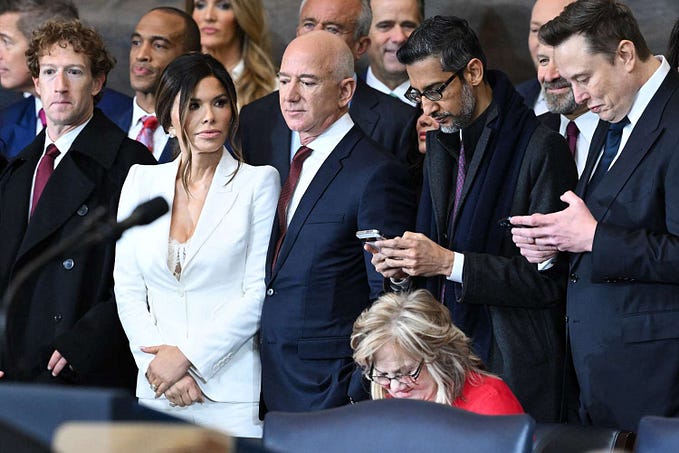The Political Angle to COVID-19 and Why Many Died of the Virus in the US

Though the conversations on COVID-19 center more on the health and well-being of the people, the corona virus pandemic has undoubtedly affected every facet of human endeavor. This essay discusses how the political differences between the right and left wings resulted in the corona virus pandemic outbreak’s poor handling, which took over one hundred thousand American lives.
Research by (Barrios and Hochberg, 2020) explained that although people are dying from the corona virus infection, partisan bias still determines how people perceive and treat the facts about the virus. They argued that the political beliefs of some actors like President Trump and some governors in the fight against the pandemic have had a high influence on some measures initiated by the World Health Organization (WHO) — social distancing behavior — to fight the COVID-19 pandemic. (Barrios and Hochberg, 2020) maintained that the ever-increasing division between the Republicans and the Democrats, and the conspiracy theorists who were significant supporters of the two political parties may have aided in the transmission of the virus unknowingly, which was evident in the different protests that were organized across the states requesting the government to ease the lock down.
Social distancing rules were never observed in those protests.
Be that as it may, the thought that political beliefs influence people’s impression of social issues, and even the economy is longstanding. A huge literature in political theories (e.g., Iyengar et al., 2012; Mason, 2013; Lott and Hassett, 2014; Mason, 2015; Gentzkow, 2016; Boxell et al. 2017) records an expansion in political polarization where ideological groups get progressively homogeneous in the philosophy of their individuality and challenging the individuals from the opposite ideological group. Research has shown that,
people have a long-drawn-out propensity to see the world through a “partisan perceptual screen,” whereby their assessment of their sociology-economic conditions and approaches rely upon whether the political parties they support are in power. (e.g., Bartels, 2002; Gaines et al., 2007; Gerber and Huber (2009); Mian et al., 2018; Kempf and Tsoutsoura, 2019).
The same political polarization also formed the perception of the coronavirus pandemic. The Republicans perceived it as a “Chinese virus” because President Trump called it that, while the Democrats believe it is a plague that attacked the American people out of the negligence and ineptitude on President Trump’s side.
In their paper, How Does Household Spending Respond to an Epidemic? Consumption During the 2020 COVID-19 Pandemic (Baker et al., 2020) opined that Republicans reported less concern about the new infection by and large.
For instance, an Axios poll between March 5 and 9 found that 62% of Republicans felt that the COVID-19 danger was significantly exaggerated, while 31% of Democrats and 35% of Independents thought the equivalent. A Quinnipac survey between March 5 and 8 also discovered that 68% of Democrats were concerned, while just 35% of Republicans were concerned.
These different viewpoints from the different political parties significantly resulted in poor handling of the pandemic. The Republicans and Democrats spent the time required to tackle the virus head-on on arguments and counter-arguments. The conservative media moved quickly from downplaying the seriousness of the crisis to believing it to be a Democratic plot to bring down President Trump.

As explained by Cassidy (2020),
President Trump played politics when he opposed the call by health specialists to deploy the Defense Production Act, a 1950 law that gives the President express powers to organize the production of specific things when they become significant for national security toward the beginning of March.
The experts cautioned that the United States might run low on fundamental clinical supplies, such as masks and ventilators. Cassidy (2020) argued that though President Trump later used the demonstration as a reason to for providing the manufacturers of ventilators with the parts they needed to accelerate production. President Trump misled the American people, mainly because many died due to the shortage of these clinical supplies.
Matthew Gentzkow, a Stanford University business analyst leading a gathering of specialists following partisanship in the pandemic response, said his group initially thought that a health emergency would limit contrasts — accepting that individuals who differ over tax charges or guns would concur about a pandemic. Instead, they discovered that Republicans were increasingly wary about the adequacy of social distancing than the Democrats and had been moving freely outside their homes.
The political differences were a determining factor in deciding how Americans reacted to the COVID-19 pandemic.
With political authorities sending clashing messages about the emergency of the pandemic, and President Trump and other Republican authorities once in a while saying it was less extreme, and Democrats giving more accentuation to its threats (Beauchamp 2020; Stanley-Becker and Janes 2020; Coppins 2020; McCarthy 2020), and the factional media amplifying these divisions (Aleem 2020; Kantrowitz 2020), the American people could not take any early precautionary measures like social distancing to stay safe from getting infected by the virus (Gentzkow et al., 2020).
Conclusion
This essay is a report of a private academic research carried out by our team. It shows that the conflicting messages from political authorities and news sources about the seriousness of COVID-19 no doubt had a substantial influence on how Americans reacted to the pandemic.
It outlined how the division and disagreements between the Republicans and Democrats about the possible dangers and dangerous tendencies of the virus watered down the grave nature of the corona virus transmission, which made people go on with their daily activities without the observance of social distancing.
The work elucidated with the help of literature that political polarization and belief can affect the perception of social issues, economy, and health of a country. This shows that, Americans got infected by the corona virus because the leaders of the country were busy playing politics and confusing their followers and supporters on the right steps to take and before they knew it, thousands were already infected, the hospitals were overwhelmed, and ran out of hospital supplies such as ventilators and other safety gear. That was why people died.
References
Aleem, Zeeshan. 2020. A new poll shows a startling partisan divide on the dangers of the coronavirus. Vox. March 15. https://www.vox.com/2020/3/15/21180506/coronavirus-poll-democrats-republicans-trump.
Baker, Scott R., R.A. Farrokhnia, Steffen Meyer, Michaela Pagel, Constantine Yannelis. 2020. How does household spending respond to an epidemic? Consumption during the COVID-19 pandemic.Working Paper.
Bartels, L. M. (2002). Beyond the running tally: Partisan bias in political perceptions. Political behavior, 24(2), 117–150.
Barrios, John M., and Yael V. Hochberg. 2020. Risk perception through the lens of politics in the time of the corvid-19 pandemic. Working Paper.
Beauchamp, Zack. 2020 The stunning contrast between Biden and Trump on coronavirus.Vox.com.https://www.vox.com/policy-andpolitics/2020/3/12/21177135/coronavirus-covid-19-pandemic-trump-biden-speeches.
Boxell, L., M. Gentzkow, and J. M. Shapiro (2017). Greater internet use is not associated with faster growth in political polarization among us demographic groups — proceedings of the National Academy of Sciences 114 (40), 10612–10617.
Campbell, Angus, P., W. Miller, and D. Stokes (1960). The American Voter. New York: Wiley.
Cassidy, John. 2020. The coronavirus is transforming politics and economics.
https://www.newyorker.com/news/our-columnists/the-coronavirus-is-transforming-politics-and-economics. Accessed June 2020.
Coppins, McKay. 2020. Trump’s Dangerously Effective Coronavirus Propaganda.TheAtlantic.com.https://www.theatlantic.com/politics/archive/2020/03/trump-coronavirus-threat/607825/.
Gentzkow, Hunt Allcott, Levi Boxell, Jacob Conway, Michael Thaler, David Yang. 2020. Polarization and public health: partisan differences in social distancing during the coronavirus pandemic. Working Paper.
Gaines, B. J., Kuklinski, J. H., Quirk, P. J., Peyton, B., & Verkuilen, J. (2007). Same facts, different interpretations: Partisan motivation and opinion on Iraq. The Journal of Politics, 69(4), 957–974.
Gerber, A. S., and G. A. Huber (2009). Partisanship and economic behavior: Do partisan differences in economic forecasts predict real economic behavior? American Political Science Review 103(3), 407–426.
Gentzkow, M. (2016). Polarization in 2016. Toulouse Network for Information Technology Whitepaper, 1–23.
Iyengar, S., G. Sood, and Y. Lelkes (2012). Affect, not ideological, social identity perspective on polarization. Public opinion quarterly 76(3), 405–431.
Lott, J. R., and K. A. Hassett (2014). Is newspaper coverage of economic events politically biased? Public choice 160(1–2), 65–108.
McCarthy, Tom. 2020. Disunited States of America: Responses to coronavirus shaped by hyper-partisan politics. The Guardian. March 29. https://www.theguardian.com/us-news/2020/mar/29/america-states-coronavirus-red-blue-different-approaches.
Mason, L. H. (2013). The polarizing effects of partisan sorting. In APSA 2013 Annual Meeting Paper.
Mason, L. (2015). “I disrespectfully agree”: The differential effects of partisan sorting on social and issue polarization. American Journal of Political Science, 59(1), 128–145.
Kantrowitz, Alex. 2020. Conservative media still is not sure what to think about the coronavirus. Buzzfeed news. March 18. https://www.buzzfeednews.com/article/alexkantrowitz/conservative-media-still-isnt-sure-coronavirus.
Kempf, E. and M. Tsoutsoura (2018). Partisan professionals: Evidence from credit rating analysts. Technical report, National Bureau of Economic Research.
Stanley-Becker, Isaac, and Chelsea Janes. 2020. As virus takes hold, resistance to stay-at-home orders re-mains widespread — exposing political and social rifts. Washington Post. April 2.20 https://www.washingtonpost.com/politics/as-virus-takes-hold-resistance-to-stay-at-home-orders-remains-widespread–exposing-political-and-social-rifts/2020/04/02/d87314e0-7436-11ea-85cb-8670579b863dstory.html










